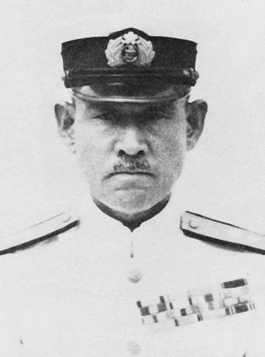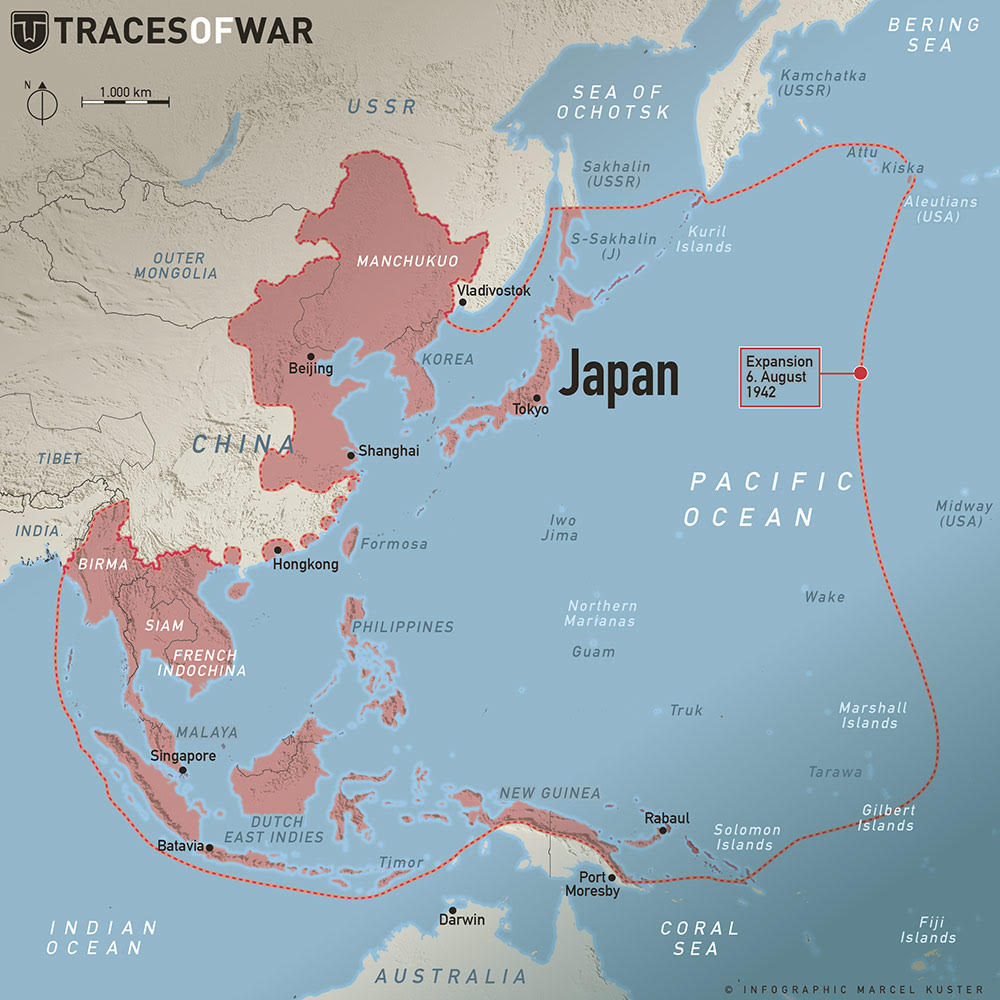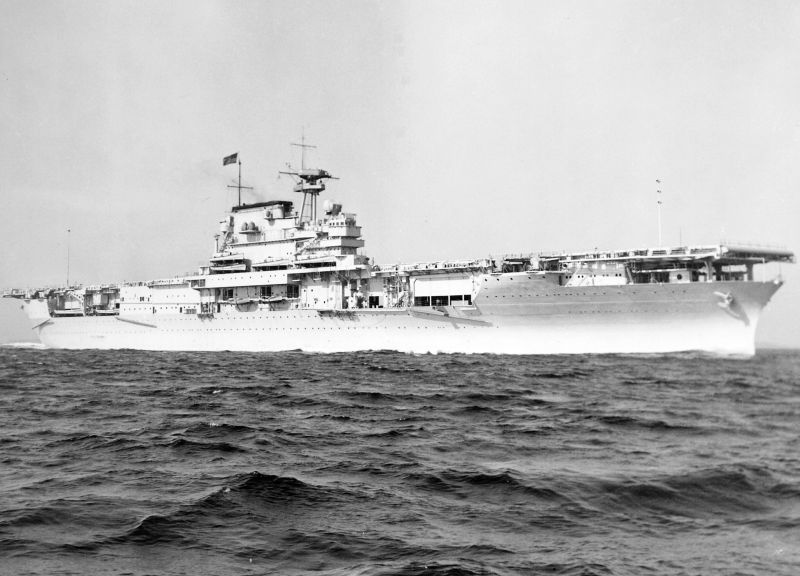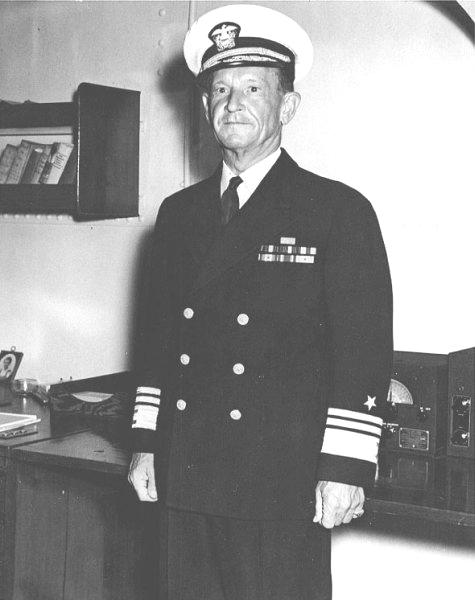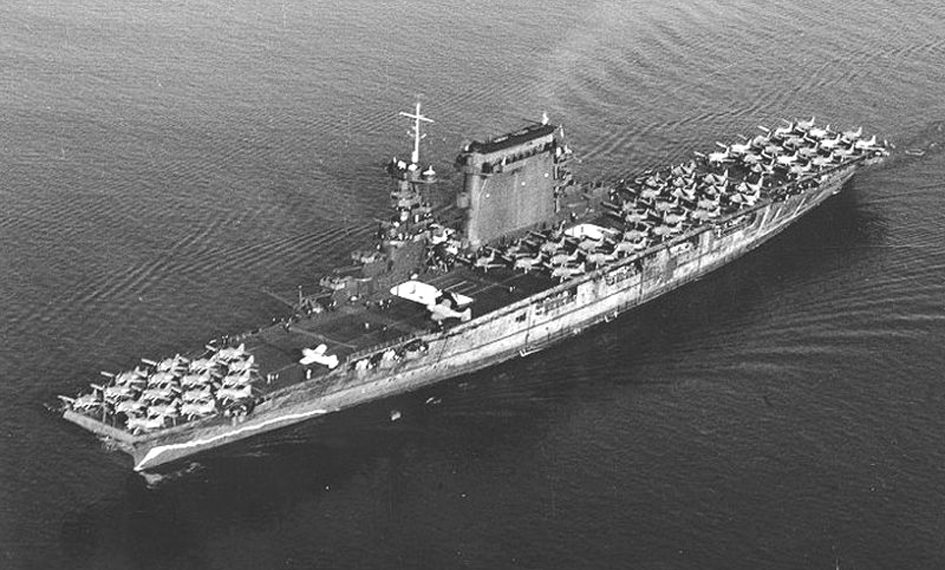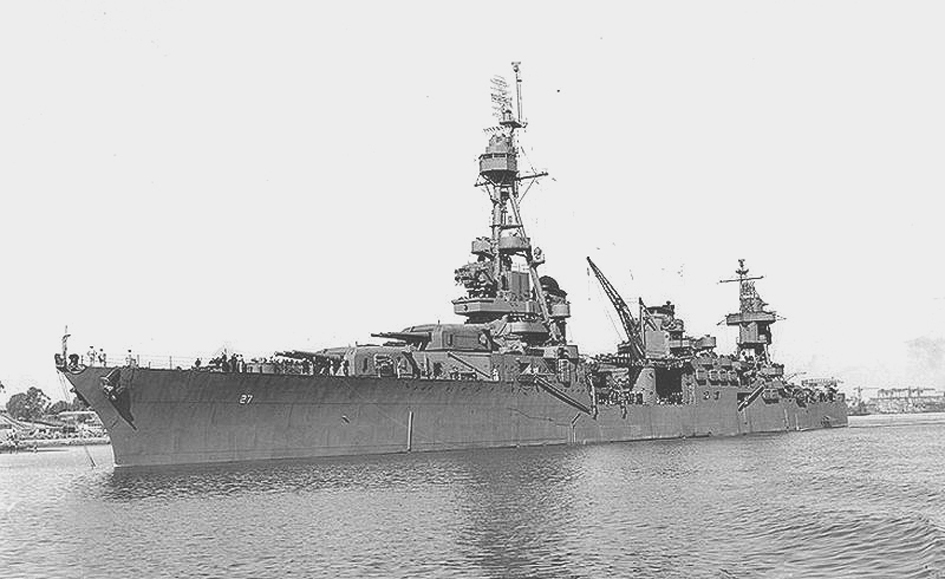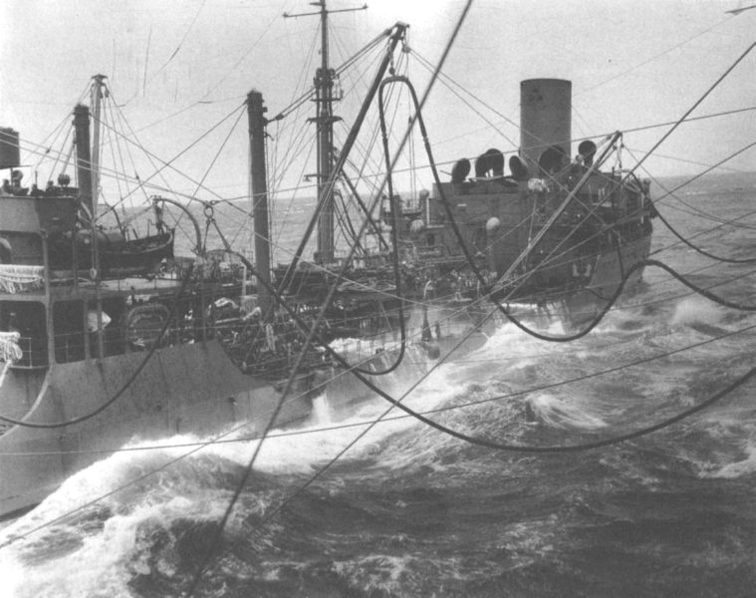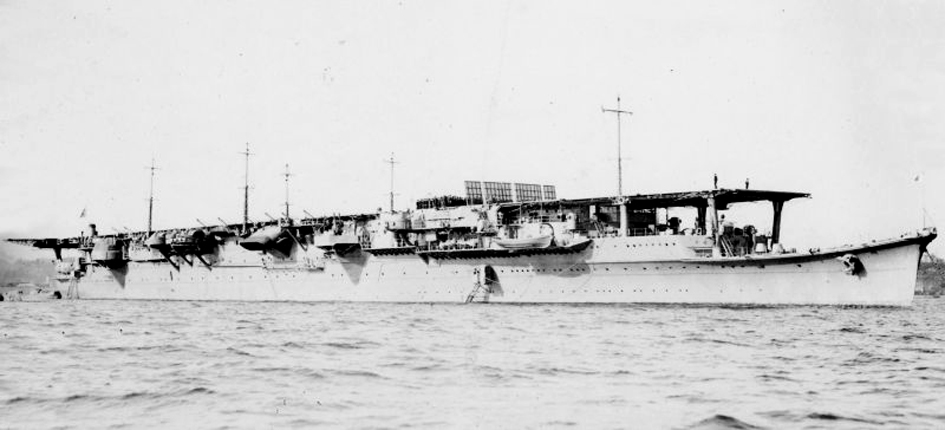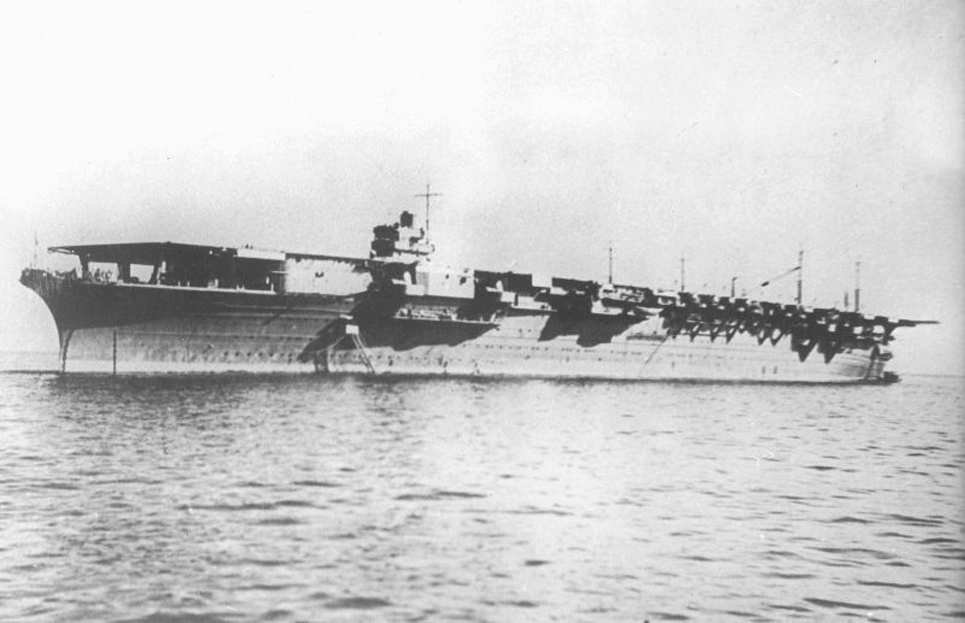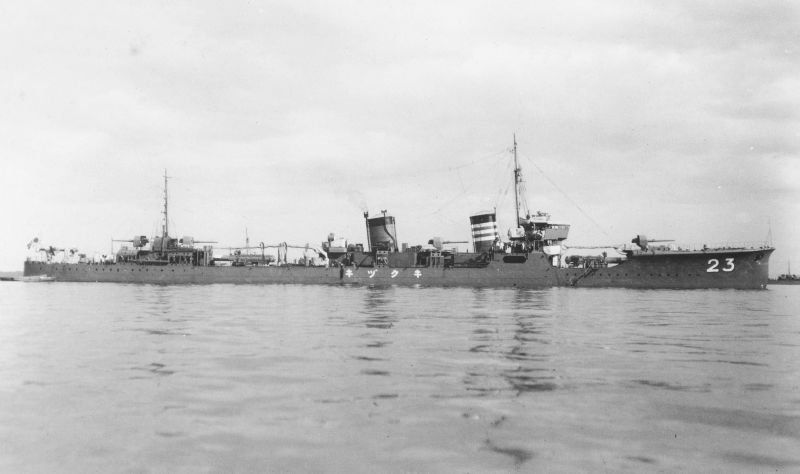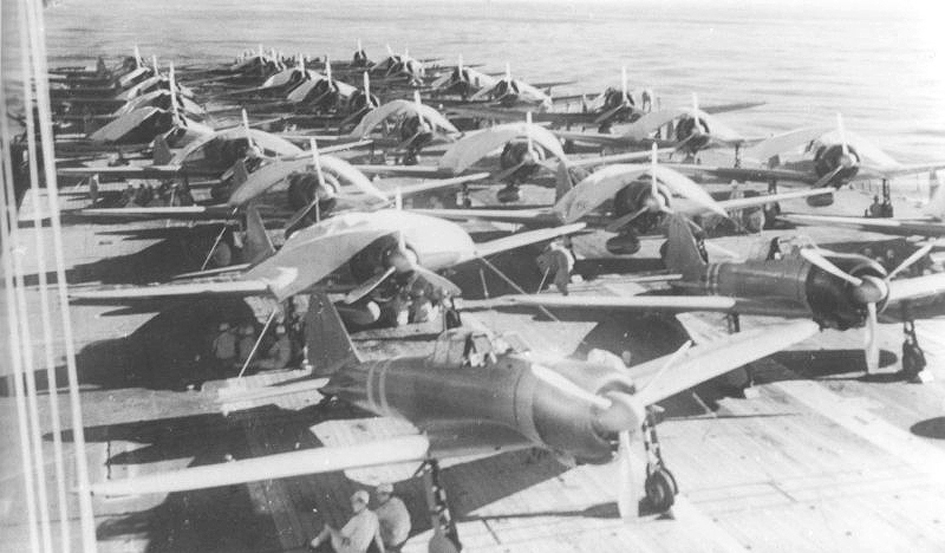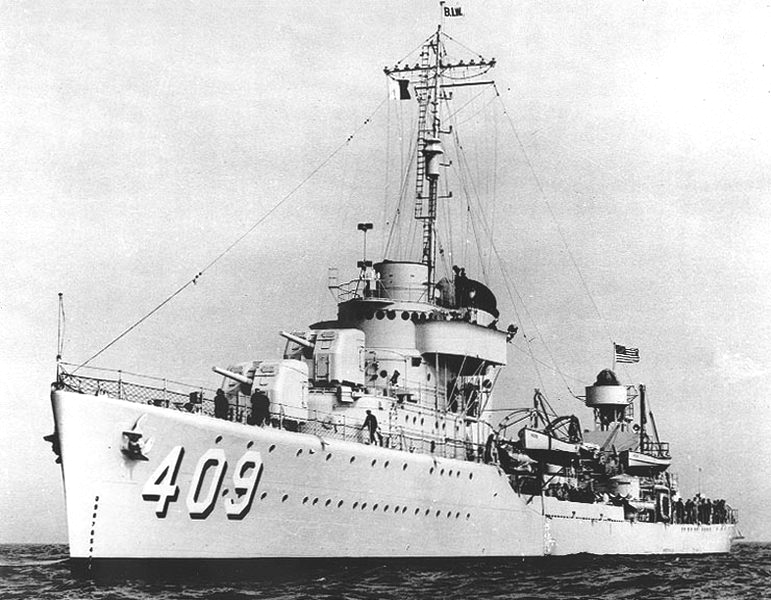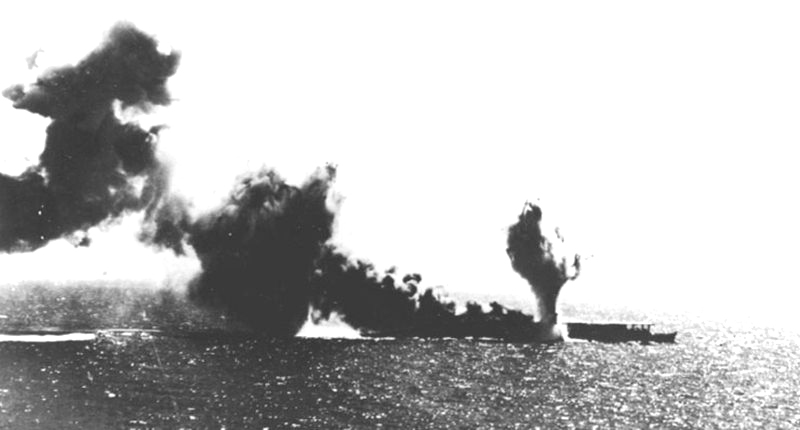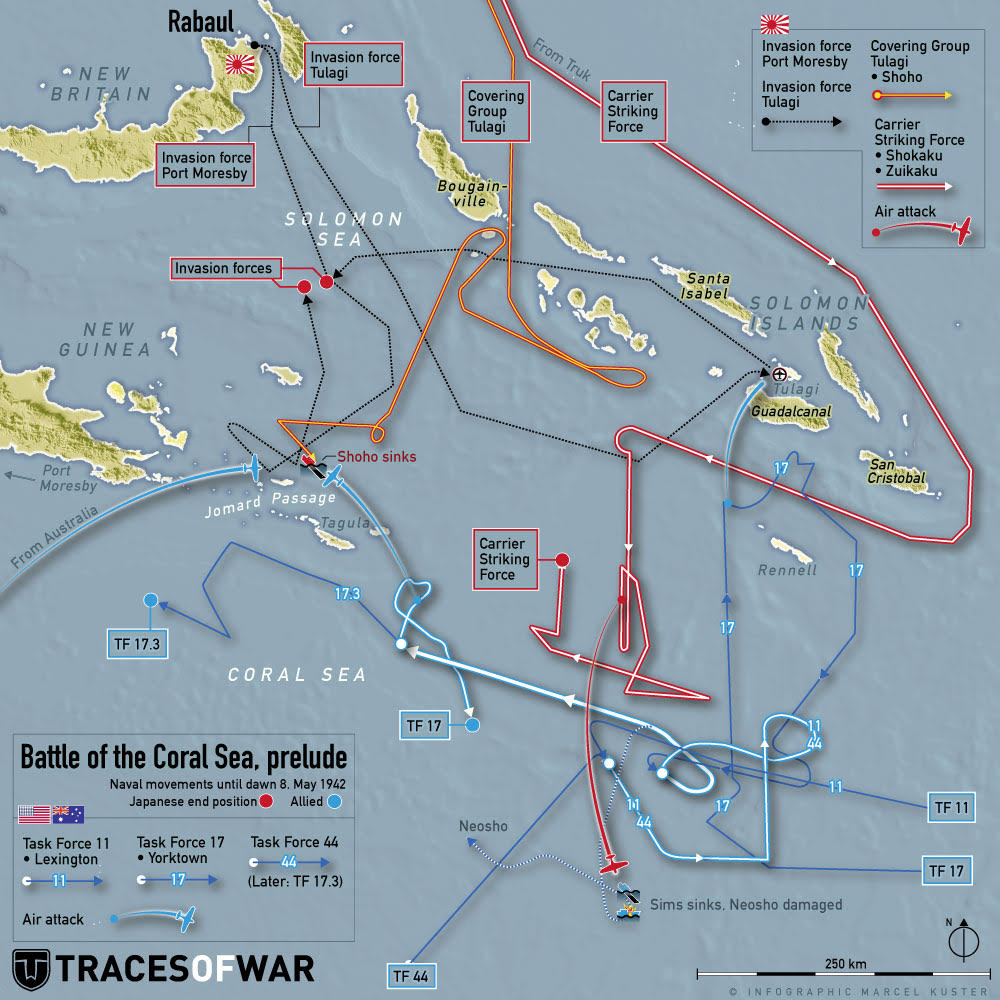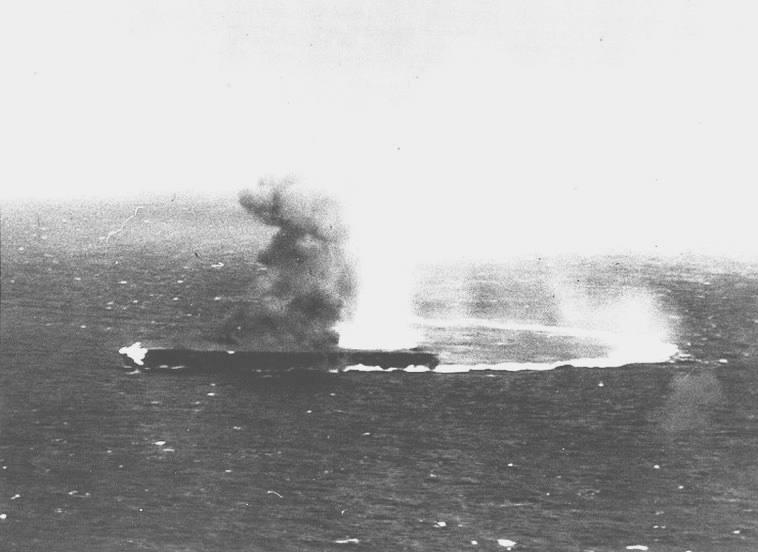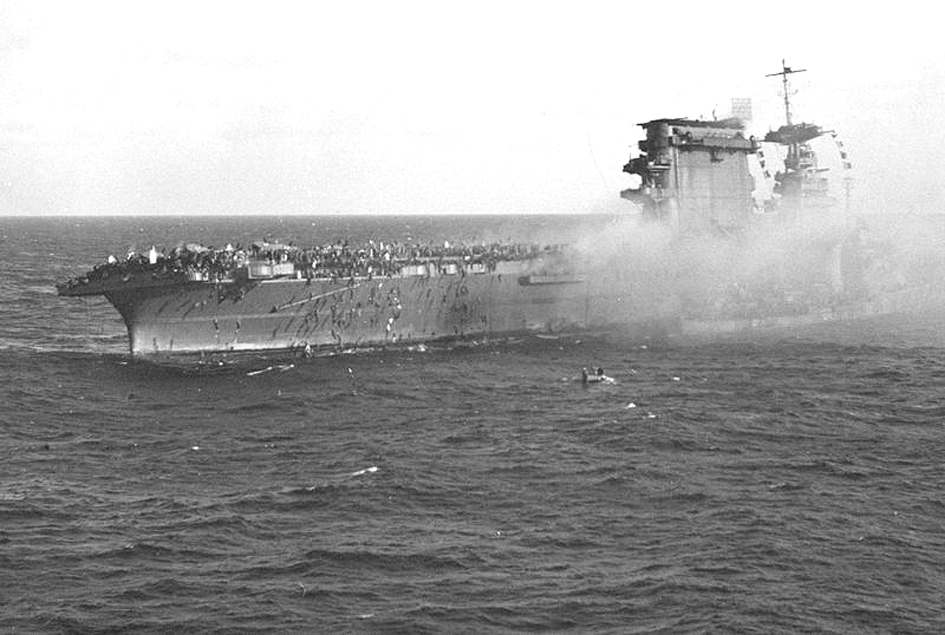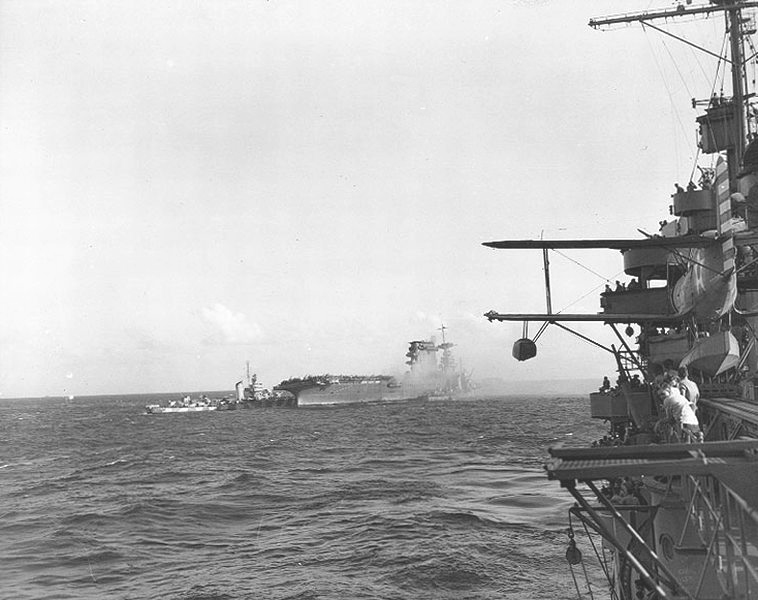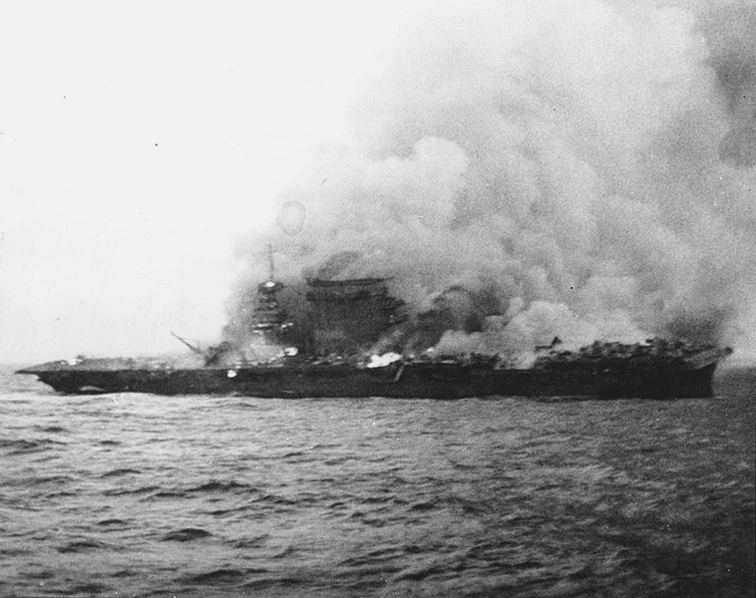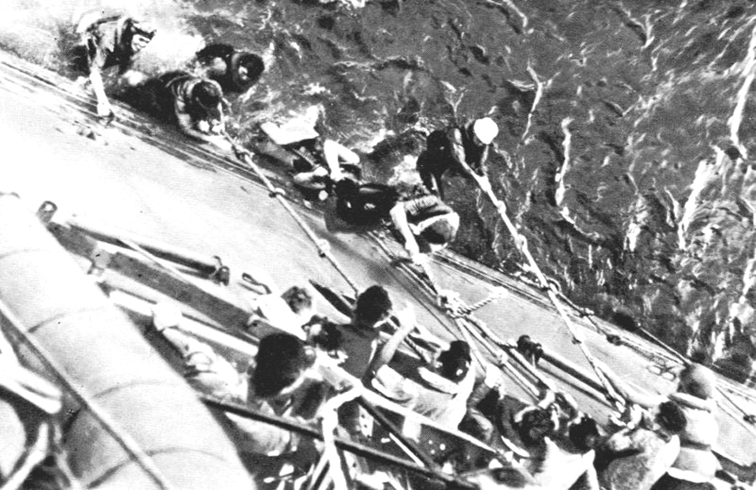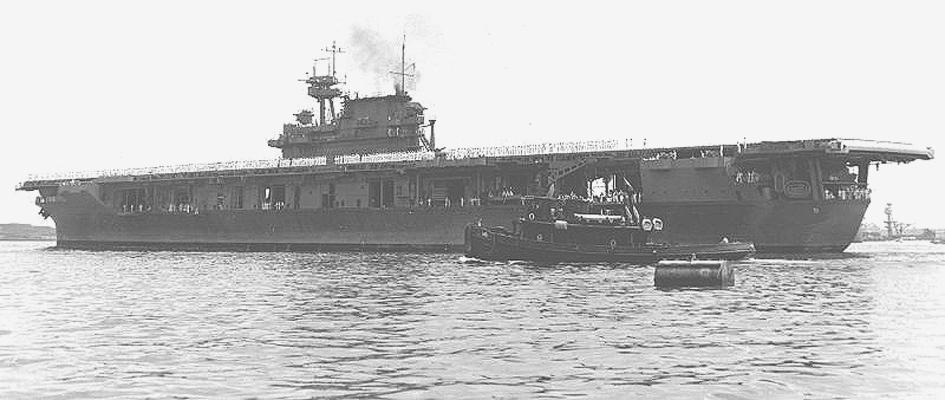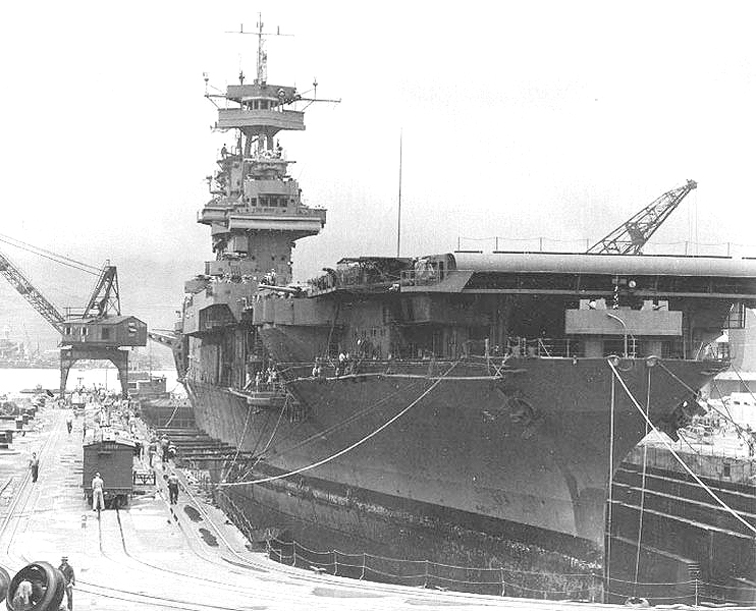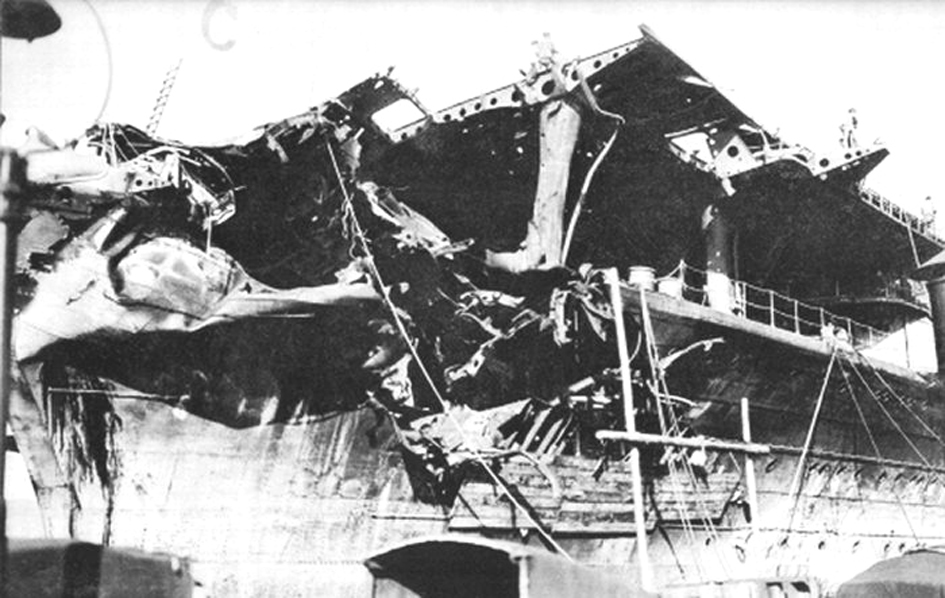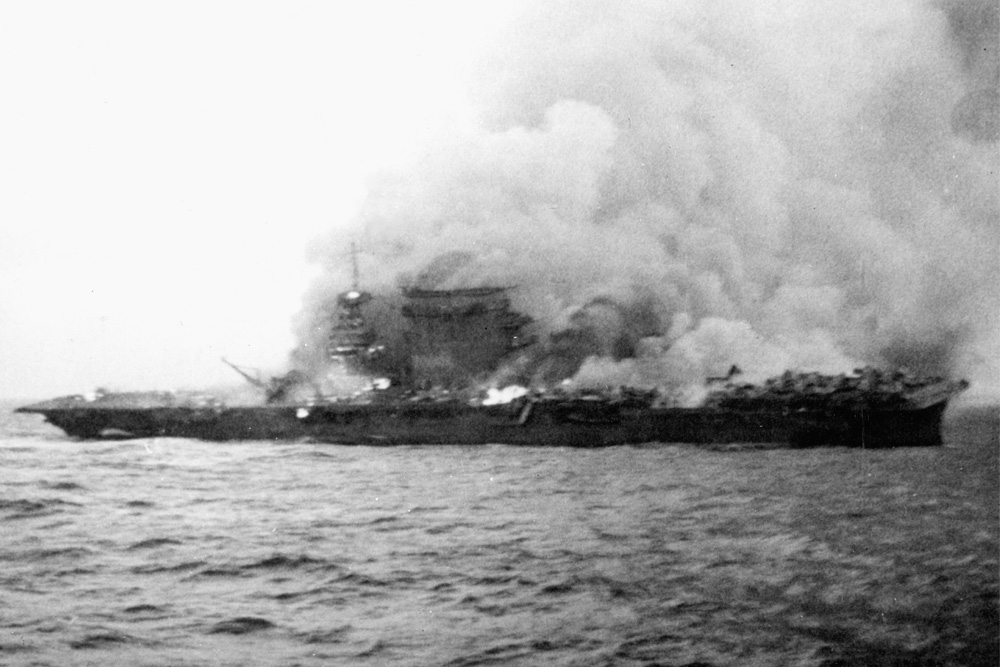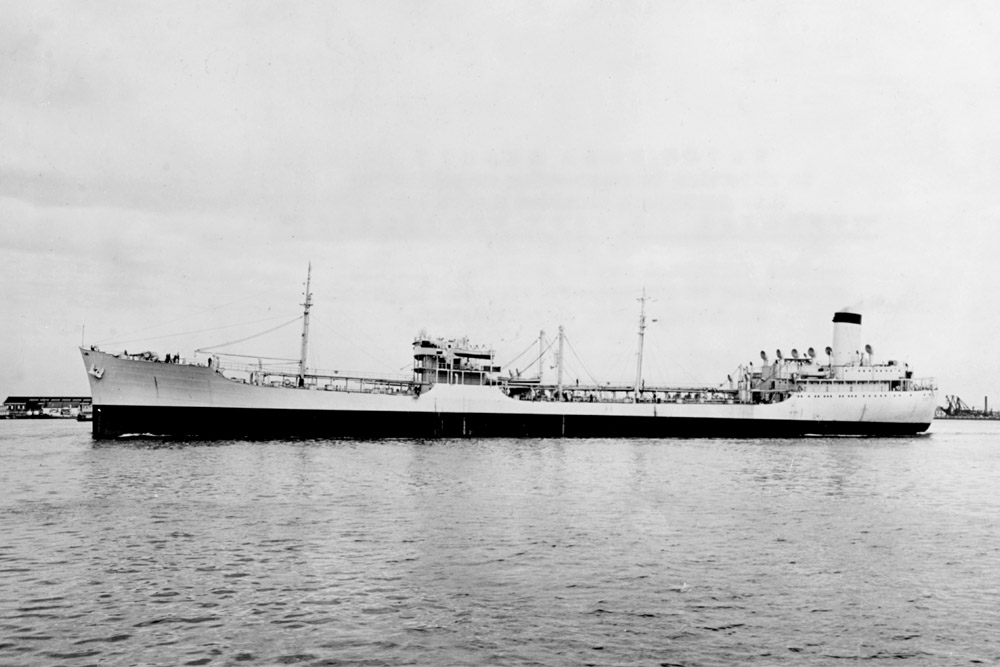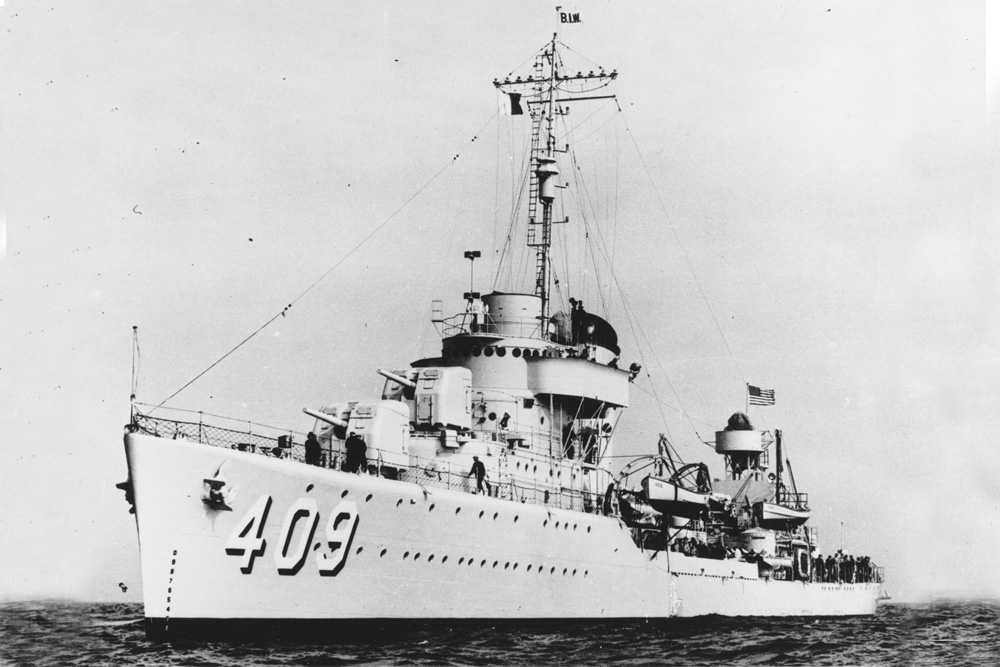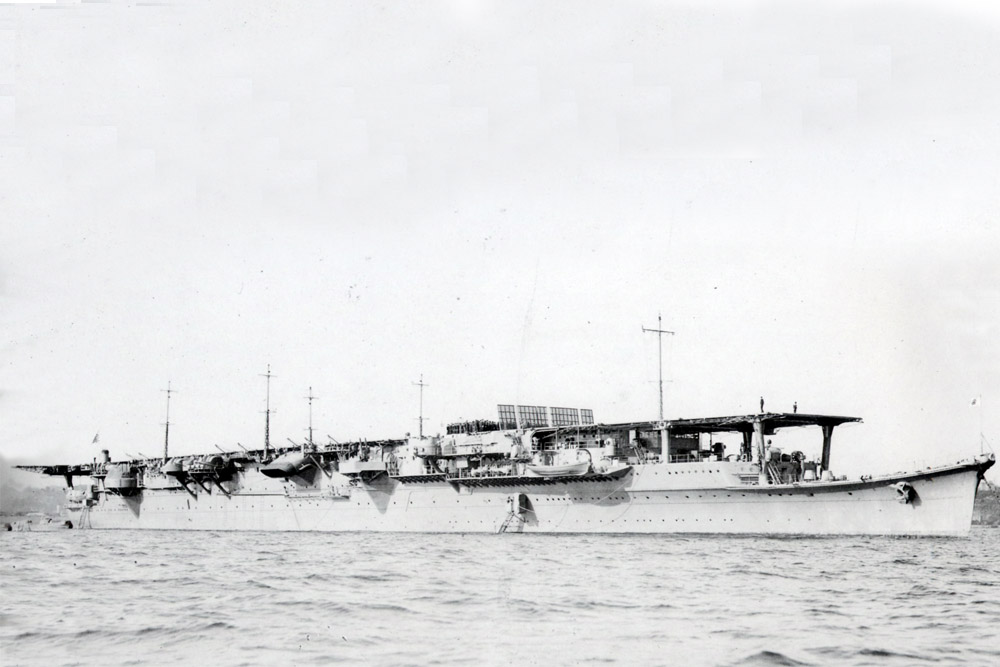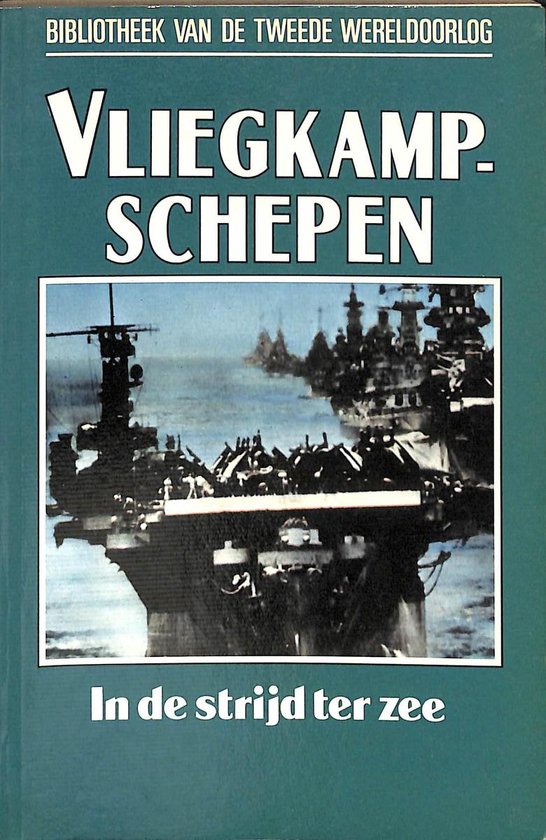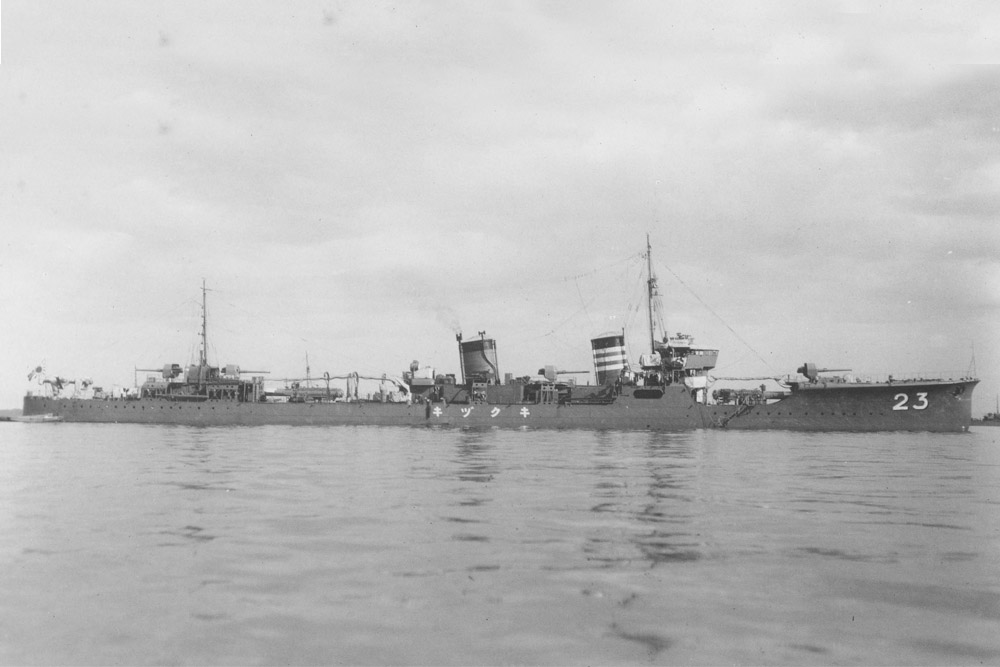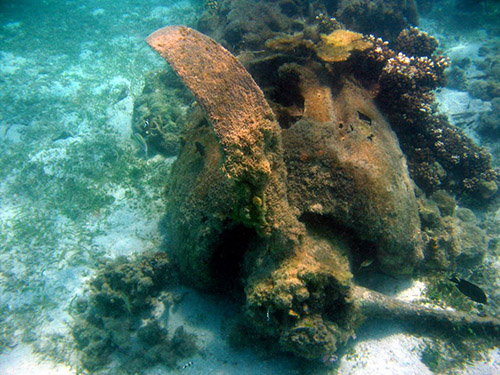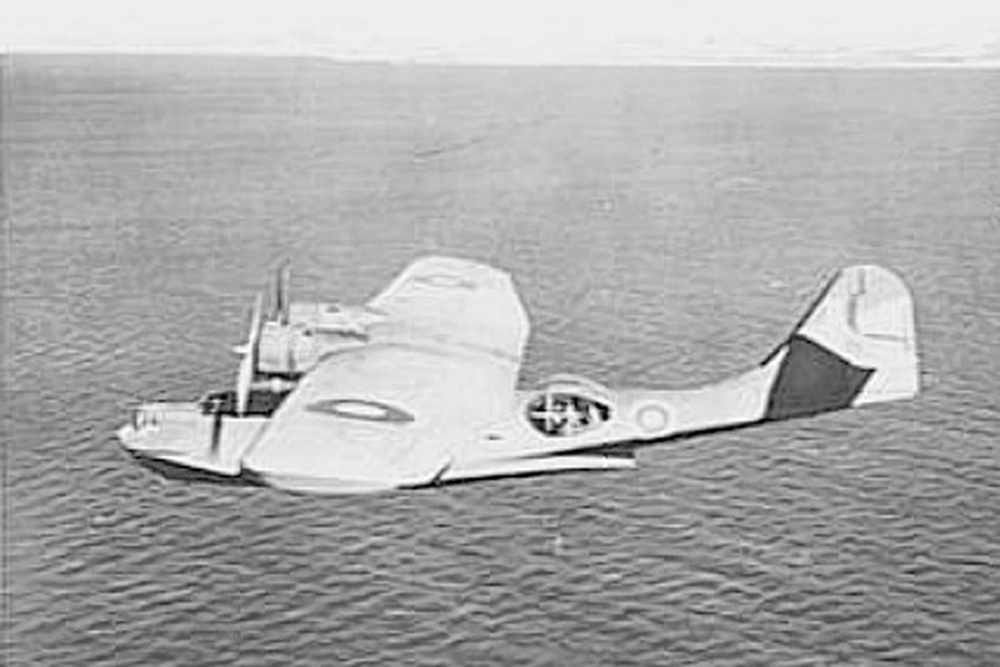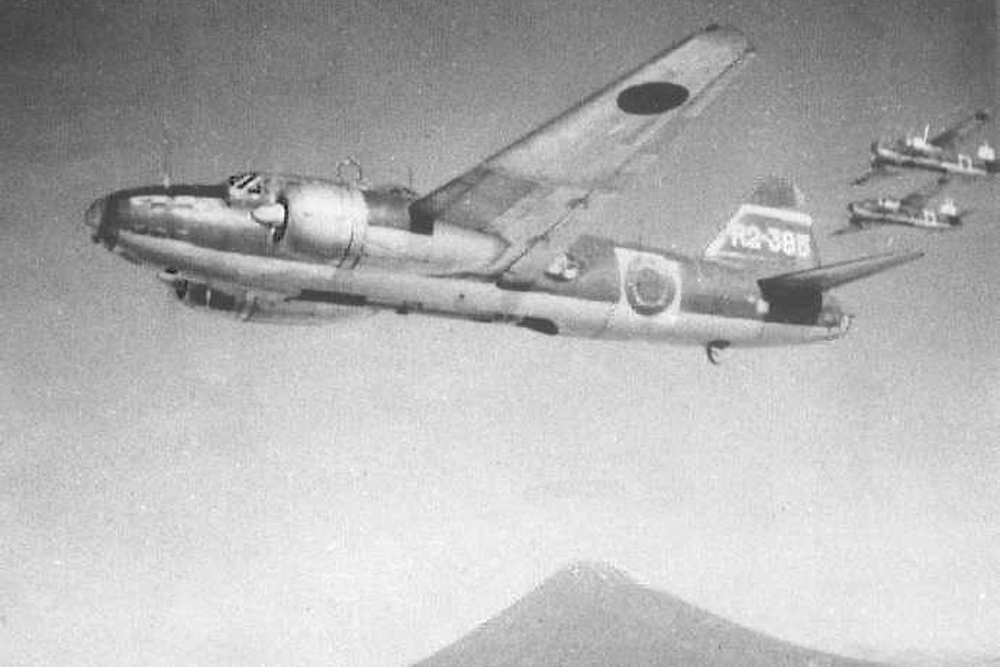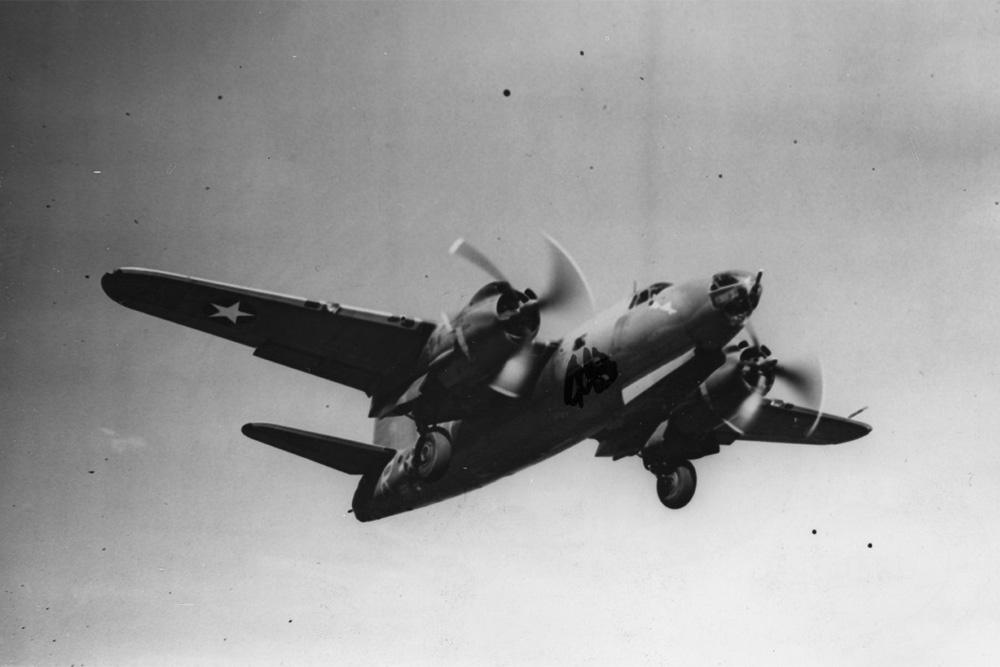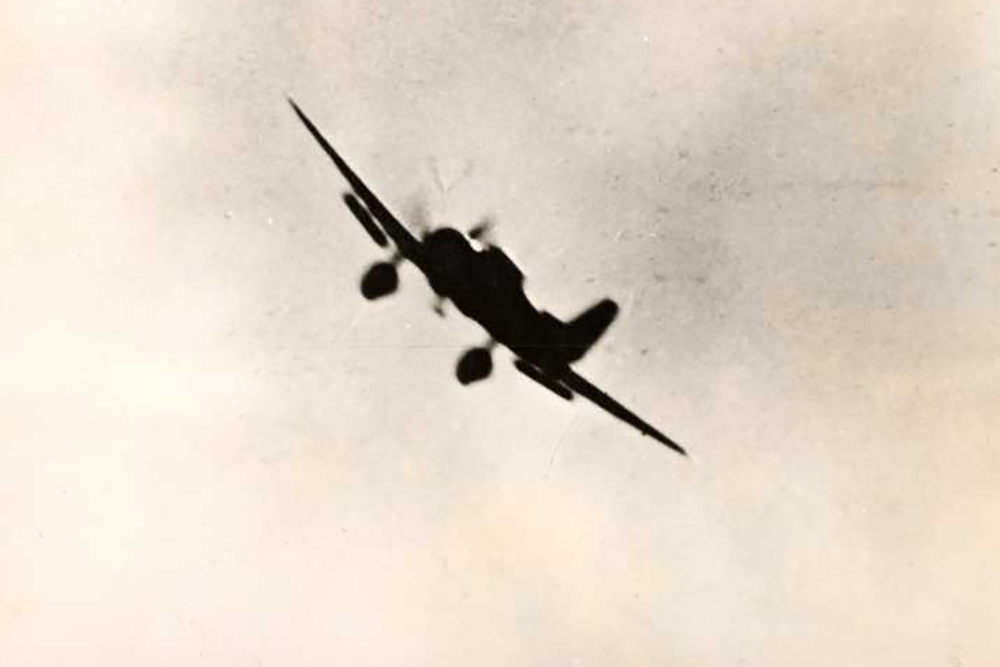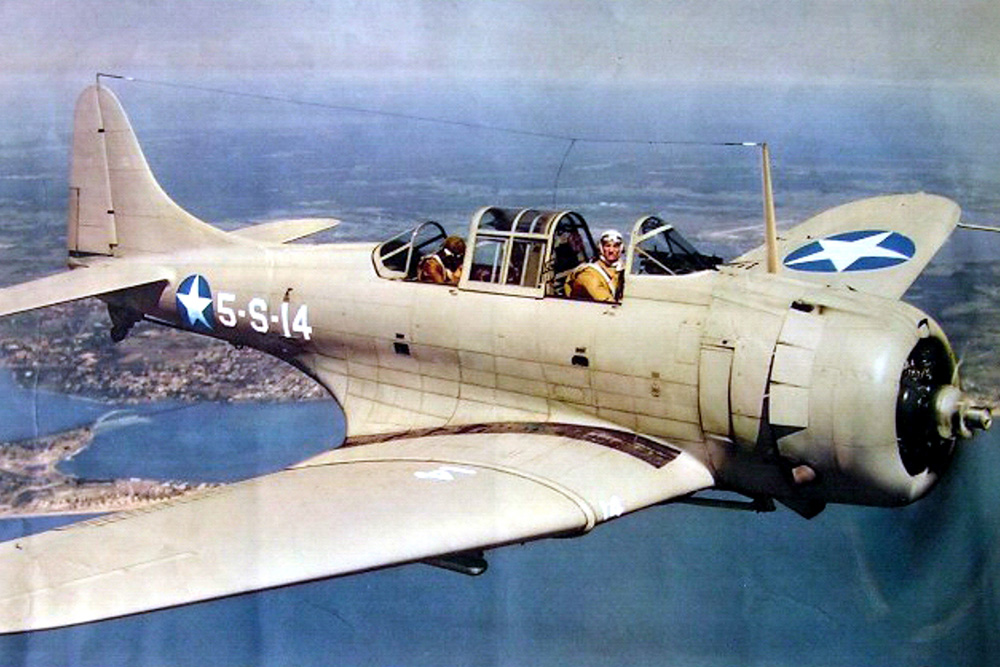Introduction
The battle of the Coral Sea, which took place from May 4-9 and was fought between the Imperial Japanese Navy and the US Navy, assisted by the Royal Australian Navy (RAN), was an extraordinary occasion in more than one aspect. It was the first sea battle in history to be fought exclusively by aircraft carriers. Also, the aircraft carriers, involved in the Coral Sea battle did not see each other during this battle, which had never happened before. Moreover, it was a battle in which both sides committed serious mistakes, mostly due to inexperience.
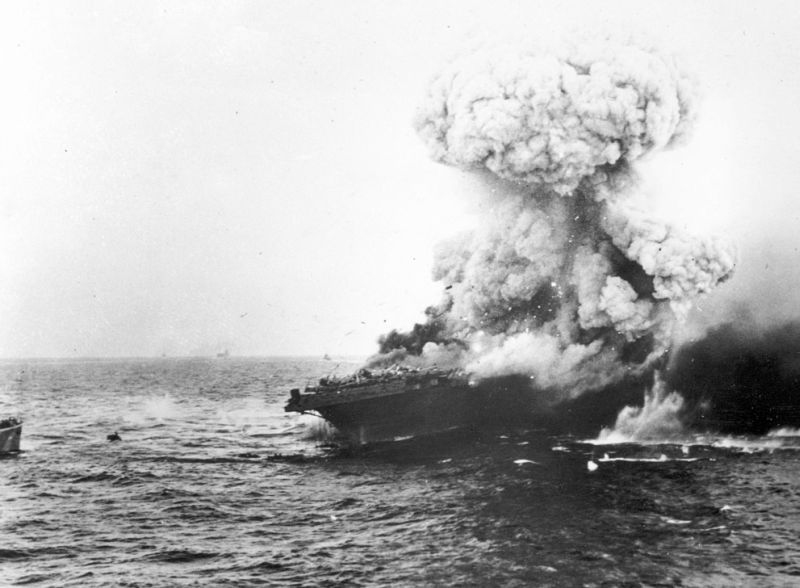
A steam explosion shrouds USS Lexington in a huge mushroom-shaped pillar of smoke, May 8, 1942, in the Coral Sea. Source: The Atlantic
The Americans were badly shaken after the December 7, 1941, Japanese surprise attack on Pearl Harbor, the naval base of the US Pacific Fleet on Oahu, Hawaii. On April 18, 1942, the daring Doolittle Raid proved that the Japanese were not untouchable. Moreover, the success of the raid on the Japanese homeland, with 16 B-25 Mitchell bombers, had given the Americans a morale boost. The American forces, the American citizens, and their political leaders believed, at least in due course, in an Allied victory. The transition from Allied defeats to successes, which had started with this Doolittle raid, was continued with the battle of the Coral Sea.
During the first months of 1942, the Japanese forces occupied British Malaysia, Dutch East Indies, Singapore, Wake Island, New Britain, the Guilbert Islands, Guam and the Philippines. From February till the beginning of April 1942, the Japanese occupied the northern part of New Guinea. The main reasons for these conquests were the acquisition of raw materials and the occupation of strategic points. The next priority for the Japanese was to protect and defend the conquered territories by the occupation of a circle of strategically important islands in the Pacific. Moreover, the whole of New Guinea would have to be conquered to isolate Australia and New Zealand or to serve as a stepping stone for a possible invasion of Australia. The Solomon Islands, New Caledonia and Fiji should be occupied for the same reason.During the first months of 1942, the Japanese forces occupied British Malaysia, Dutch East Indies, Singapore, Wake Island, New Britain, the Guilbert Islands, Guam and the Philippines. From February till the beginning of April 1942, the Japanese occupied the northern part of New Guinea. The main reasons for these conquests were the acquisition of raw materials and the occupation of strategic points. The next priority for the Japanese was to protect and defend the conquered territories by the occupation of a circle of strategically important islands in the Pacific. Moreover, the whole of New Guinea would have to be conquered to isolate Australia and New Zealand or to serve as a stepping stone for a possible invasion of Australia. The Solomon Islands, New Caledonia and Fiji should be occupied for the same reason.
For the realisation of these plans, Vice Admiral Shigeyoshi Inoue, commander of the Japanese 4th Fleet, also called the South Seas Force, suggested occupying Tulagi, a small island, part of the Solomon archipelago north of Guadalcanal, and building an airfield there. He also proposed an amphibious landing at Port Moresby, the capital of Australian New Guinea. From Port Moresby, land-based aircraft could reach Northern Australia and so enforce Australian isolation. Attacks on New Caledonia and Fili could be launched from an airfield on Tulagi. The Japanese army would not provide troops to invade Australia and the General Staff agreed with this plan and promised Inoue full cooperation.
After the completion of plan MO the conquests of Fili, Samoa and New Caledonia, codenamed FS and the conquests of the islands Nauru and Ocean, northeast of the Solomons islands would take place under codename RY. In the meantime, the supreme commander, Admiral Isoroku Yamamoto, was busy with the preparation of the invasion of Midway, plan MI. This atol, west of Hawaii, was to become a part of the defensive belt of the territories, conquered by the Japanese. Apart from that, Yamamoto wanted to force the American aircraft carriers into a decisive battle and thus deal a defensive blow to the US Navy. Even though he considered Plan MI of much greater importance than Plan MO, Yamamoto authorized the temporary assignment of the larger carriers Zuikako and Shokaku and the smaller Shoho, together with their associated cruisers and destroyers to Inoue at the risk of the expense to his own plans.
Definitielijst
- Guadalcanal
- First island in the Pacific liberated by US forces from the Japanese during World War 2. Between August 1942 and February 1943 a number of confrontations on land, at sea and in the air took place on this island.
- invasion
- Armed incursion.
- Midway
- Island in the Pacific where from 4 to 6 June 1942 a battle was fought between Japan and the United States. The battle of Midway was a turning point in the war in the Pacific resulting in a heavy defeat for the Japanese.
- Raid
- Fast military raid in enemy territory
American reaction and American strength
Since the beginning of the Second World War, specialists of the Office of Naval Communications in Pearl Harbor, led by the capable Lieutenant Commander Joseph John Rochefort, had achieved minor successes in deciphering the secret codes, used by the Japanese forces in their radio communications. They were assisted and supported in this by British and Dutch cryptologists. In March 1942, American cryptologists were able to decipher about 15 per cent of one of the codes used by the Japanese. By the end of April 1942, it was 85 per cent. This was enough to know in late April, that at least one aircraft carrier and some other larger naval vessels were being sent to the fourth fleet of Vice Admiral Inoue for operation MO.
On March 17, 1942, Winston Churchill and President Roosevelt agreed that the Americans would assume responsibility for the defence of the entire Pacific region, including Australia and New Zealand. (On the same day, the American general Douglas MacArthur was appointed commander in chief of the Allied forces in the Pacific). The British could focus on the Indian Ocean in repelling the Japanese. For the Americans, Port Moresby as well as the Solomon Islands were of vital importance. On April 13, 1942, British crypto analysts decoded a Japanese radio message, informing Inoue of the fact that the Japanese 5th aircraft carrier division, consisting of the large carriers Shokaku and Zuikaku, both veterans of the Japanese attack on Pearl Harbor, were en route to his 4th Fleet. The British passed this on to their American Allies, with their conviction that MO meant Port Moresby. The commander of the US Pacific Fleet, Chester W. Nimitz, discussed this with his staff and they concluded that a large Japanese attack was imminent in the southwestern Pacific, with Port Moresby, the most likely target.
After consulting Admiral Ernest King, the Commander in Chief of the US Fleet in Washington DC, Nimitz decided to send all four American aircraft carriers in the Pacific to the Coral Sea. On April 29, 1942, the American aircraft carriers and their escorts received the actual order to move to the Coral Sea. Task Force 17 (TF17), under the command of Rear Admiral Frank Jack Fletcher, was built up around the 22.500-ton Yorktown class aircraft carrier USS Yorktown (CV-5), which had been brought to the Pacific to reinforce the Pacific Fleet after the attack on Pearl Harbor. The carrier was protected by three heavy cruisers: USS Astoria, USS Chester and USS Portland and five destroyers. TF17 was already present in the South Pacific and in the company of the two fleet tankers, USS Neosho and USS Tippecanoe, escorted by two destroyers. Task Force 44 (TF44) was added to TF17 for added protection. TF44 consisted of the Australian cruisers HMAS Australia and HMAS Hobart, the American heavy cruiser USS Chicago and the destroyers USS Perkins and USS Wipple and was commanded by Australian Rear Admiral John Gregory Grace.
Task Force 11 (TF11) was formed around the aircraft carrier USS Lexington (CV-2) of the eponymous class. The Lexington, also named "The Gray Lady" or "Lady Lex", had a standard displacement of 33.000 tons and was laid up as a battlecruiser, along with the sister ship USS Saratoga. Under the influence of the Washington Treaty, both hulls were intended as aircraft carriers. Commanded by Rear Admiral Aubrey W. Fitch, TF 11 also consisted of the heavy cruisers USS Minneapolis and USS New Orleans and five destroyers. On April 29, the squadron was located between New Caledonia and Fiji in the South-Pacific.
Task Force 16 (TF16) consisted of the Yorktown-class aircraft carriers USS Enterprise and USS Hornet (CV-8) and their escort ships. They had just returned after the successful Doolittle raid. Nimitz assumed that TF16, under the command of Rear Admiral William F. Halsey, would not be able to reach the Coral Sea in time to help prevent the invasion of Port Moresby, but sent the force as a backup. Awaiting TF16 and Halsey, Fletcher was appointed Commander of Allied naval forces in the South Pacific.
On the morning of May 1, 1942, TF17 and TF11 joined together in the Coral Sea at approximately 300 nautical miles northwest of New Caledonia. Fletcher immediately had the ships supplied with oil at sea. TF17 would be supplied with oil from USS Neosho and TF11 from Tippecanoe. The next day TF16 was refuelled and Neosho moved away from the fleet, escorted by the destroyer USS Simms. TF11 announced that it needed another two days to be fully reloaded so Fletcher decided to continue northwest with TF17. Fitch was expected to make contact with the ships of TF44, on their way from Sydney, Australia, after which the three squadrons were to assemble.
Definitielijst
- destroyer
- Very light, fast and agile warship, intended to destroy large enemy ships by surprise attack and eliminating them by using torpedoes.
- division
- Military unit, usually consisting of one upto four regiments and usually making up a corps. In theory a division consists of 10,000 to 20,000 men.
- invasion
- Armed incursion.
- raid
- Fast military raid in enemy territory
- squadron
- A military unit in the Belgian navy usually six to eight small ships operating together under one command. The smallest military unit in the Dutch air force of about 350 men. In most countries is the designation of a military unit thesize of a company. It is either an independent unit, such as a battery, or part of a bigger Calvary unit. In the air force it is the designation of a unit of aircrafts.
Japanese strength and the Japanese attack on Tulagi
The Japanese invasion forces for Port Moresby under the command of Rear Admiral Koso Abe consisted of 5.000 troops of the Imperial Japanese Army and 500 troops of the 3rd Kure Special Naval Landing Force (SNLF). They were billeted on 11 transport vessels, protected by a light cruiser and 6 destroyers. The fleet was scheduled to leave on May 4, 1942, from Rabaul, the capital of the island of New Britain, east of New Guinea. In early 1942, the Japanese had conquered the island (today belonging to Papua New Guinea) in early 1942 and had made Rabaul one of their most important bases in the Pacific. The Japanese expected to arrive at Port Moresby in southeastern New Guinea around May 10.
The Japanese force that would take Tulagi to establish a seaplane base and an airfield consisted of 2 minelayers, two destroyers, 6 minesweepers, 2 submarine hunters and a transport vessel. Aboard the transport vessel were 400 troops of the SNLF. The commander of the invasion force was Rear Admiral Kiyohide Shima. The Tulagi forces were protected by a covering force under the command of Rear Admiral Aritomo Goto, which consisted of the small aircraft carrier Shoho, 4 heavy cruisers and a destroyer. To Goto`s covering force, another support group was added, consisting of two light cruisers, a mothership for seaplanes and three gunboats, under the command of Rear Admiral Kuninori Marumo. When Tulagi was firmly in Japanese hands, the fleets of Golo and Marumo were ordered to join Abe’s invasion force off Port Moresby.
The 5th Japanese Aircraft Carrier Division departed on May 1, 1942, from Truk, a base on the Japanese-occupied Caroline Islands. The division consisted of the carriers Zuikako and Shokaku, escorted by the heavy cruisers Myoko and Haguro, 6 destroyers and a fleet tanker and was commanded by Vice Admiral Takeo Takagi. Takagi’s duties included providing air cover during the intended invasions, eliminating Allied air forces at Port Moresby and intercepting Allied warships that would enter the Coral Sea in response. Vice Admiral Inoue would coordinate the whole operation from the Rabaul berthed light cruiser, Kashima.
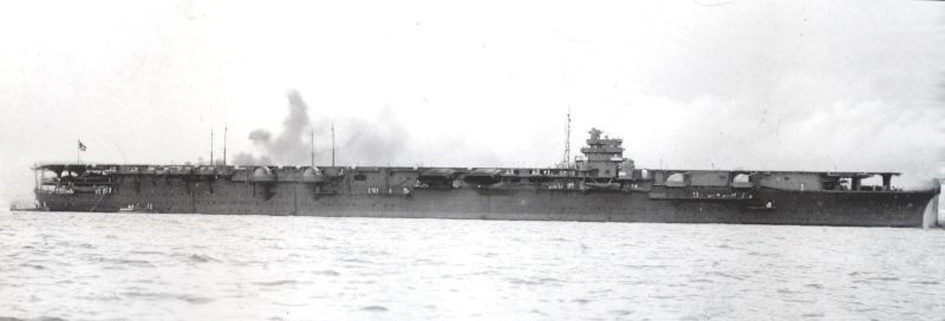
The new Japanese carrier Shokaku (26.150 tons) shortly after her commissioning, in 1941. Source: Wikipedia
Early in the morning of May 3, 1942, Shima’s invasion force arrived at Tulagi. The small and undefended island was quickly occupied and the Japanese immediately began building a seaplane- and communications base. Fighter planes of the Shoho provided air cover during the operation. Later that day, Goto’s ships left for Bougainville to take on fuel in preparation for the invasion of Port Moresby. Around 17:00 hours that same day, Fletcher was informed that the Japanese invasion force had been sighted off the southern Solomon Islands the previous day. TF17 reacted by heading for Guadalcanal at 27 knots to launch airstrikes on the Japanese invasion force. The next day, May 4, USS Yorktown launched three airstrikes on Tulagi. Shima’s Japanese force, completely taken by surprise and no longer covered by aircraft from the Shoho, suffered considerable losses. The destroyer Kikizuki and three minesweepers were sunk and another four ships were damaged. Additionally, four Japanese flying boats were destroyed, whereas the Americans only lost one Douglas SBD Dauntless dive bomber and two Grumman F4F Wildcat fighters. Towards evening, TF17 withdrew. Despite their losses, the Japanese continued to build their base and on May 6, they were able to carry out their first reconnaissance flights from Tulagi.
Definitielijst
- aircraft carrier
- A warship of large dimensions with the facilities for starting, landing and maintenance of aircrafts.
- destroyer
- Very light, fast and agile warship, intended to destroy large enemy ships by surprise attack and eliminating them by using torpedoes.
- Division
- Military unit, usually consisting of one upto four regiments and usually making up a corps. In theory a division consists of 10,000 to 20,000 men.
- Guadalcanal
- First island in the Pacific liberated by US forces from the Japanese during World War 2. Between August 1942 and February 1943 a number of confrontations on land, at sea and in the air took place on this island.
- invasion
- Armed incursion.
Before the battle
TF17, TF11 and TF44 met at 08:16 hours on May 5, 1942, at 320 nautical miles south of Guadalcanal. A message from Pearl Harbor informed Fletcher of the fact that the planned Japanese landing would take place on May 10 and that the Japanese aircraft carriers were expected to be operating in the vicinity of the invasion force. The commander of the Allied naval forces in the South Pacific ordered his ships to take on oil from USS Neosho and expected this to take a day. That same day Takagi’s carrier fleet appeared in the Coral Sea, but neither Takagi nor Flether were aware of each other’s positions.
On May 6, Fletcher merged TF11 and TF44 into TF17, and assuming that the Japanese fleet had not yet reached the Coral Sea, he carried on with loading oil. At 10:00 however, a Japanese Kawanishi reconnaissance flying boat, stationed at Tulagi, detected TF17. Fifty minutes later, Takagi was notified. He was at that moment approximately 300 nautical miles north of Fletcher. Since he was also busy loading oil, he could not react immediately. The same day, American B-17 bombers, stationed at mainland Australia, bombed up to three times the Japanese invasion force at Port Moresby, the covering force of Rear Admiral Goto with the Shoho. The bombardments from high altitude did not produce any hits, but at least now, Fletcher was aware of the position of the Japanese invasion force. He assumed that Zuikaku and Shokaku would be in the vicinity of these enemy vessels. At 18:00 the TF17 ships had finished loading oil, and the USS Neosho and the destroyer Sims were directed south to remain in a waiting position at a predetermined location while TF17 steamed north. Meanwhile, Takagi’s vessels had also finished loading oil and set course for a southerly direction. That night, both aircraft carrier fleets were only 70 nautical miles apart, but neither was aware of that fact.
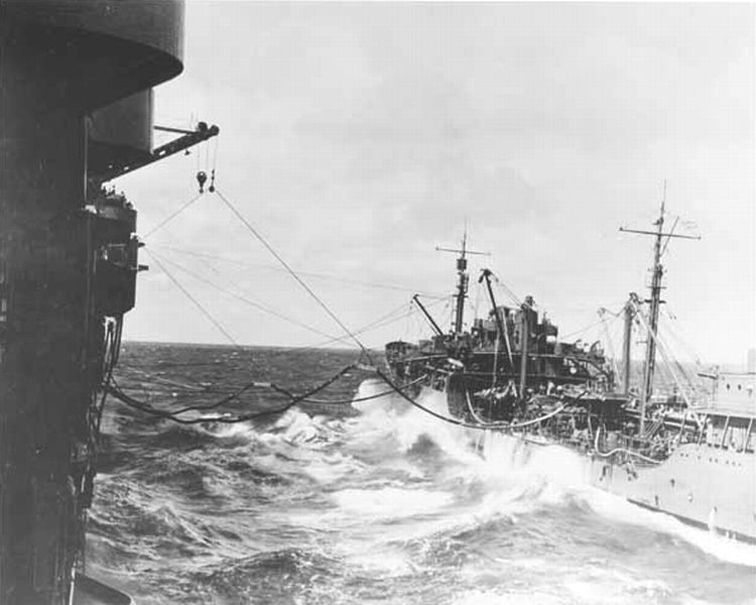
USS Yorktown, unloading oil from USS Neosho shortly before the battle of the Coral Sea. Source: Naval History and Heritage Command
The next day, May 7, 1942 at 06:25 AM, Fletcher directed Rear Admiral Grace’s, cruisers and destroyers, reinforced with the destroyers USS Walke and USS Perkins, as Task Force 17.3 (TF17.3) toward Port Moresby. Fletcher realised all too well that Grace’s vessels would be vulnerable without aircraft cover and that the protection of TF17 would be weakened, but he did not want to run the risk of the Japanese, reaching Port Moresby, while the carriers were fighting each other. Somewhat later, both Fletcher and Takagi sent several reconnaissance planes into the air, but both parties searched in the wrong direction. The Japanese scouts flew south and reported that they spotted an aircraft carrier, a cruiser and three destroyers 160 miles from Takagi’s aircraft carriers. Some 20 minutes later, this sighting was confirmed by another scout. Takagi decided to launch all his available fighter aircraft and from 08:00 18 Mitsubishi A6M Zero fighter planes (Allied codename Zeke), 36 Aichi D3A dive bombers (Allied codename Val) and 24 Nakajima B5N torpedo bombers (Allied codename Kate) took off from the flight decks of Shokaku and Zuikaku.
At 08:15 AM, US reconnaissance pilot John L. Nielsen reported sighting two aircraft carriers and four heavy cruisers. 225 nautical miles northwest of TF17. Two hours later, 18 Wildcats, 53 Dauntless dive bombers and 22 Douglas TBD-1 Devastator torpedo bombers took off from USS Yorktown (CV-5) and USS Lexington (CV-2). Some moments later, Nielsen landed on Yorktown and discovered that he had used the wrong codes in his report. He corrected his sighting in two cruisers and four destroyers. However, at 10:12, Fletcher received another report from several B-17 bombers that an aircraft carrier, 10 transport vessels and 16 warships were at the position, given by Nielsen, Fletcher assumed that this must be the invasion force for Port Moresby and that Takagi’s carriers were still in the vicinity of this fleet. He, therefore, allowed the attack to be continued.
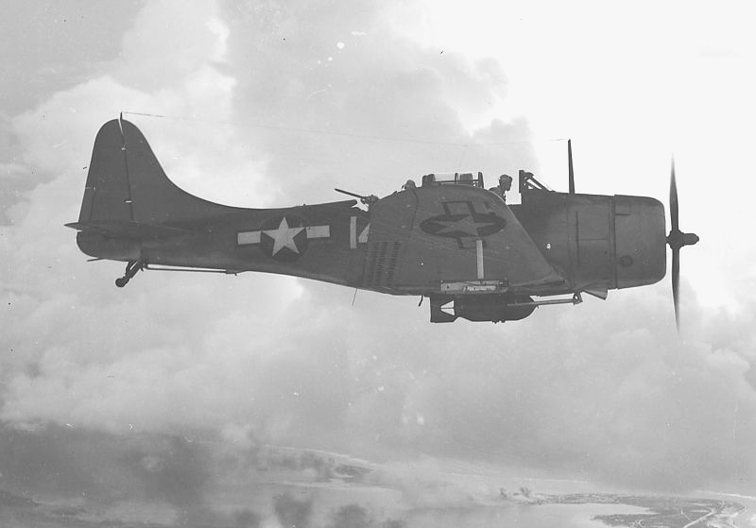
The Douglas SBD Dauntless dive bomber was also deployed by the Americans as a reconnaissance plane Source: Wikipedia
At 09:15 AM, the Japanese aircraft detected American ships at the position indicated by their scouts. However, they proved not to be the American aircraft carriers, but the USS Neosho and USS Sims. Takagi now realised that the American carriers had to be between him and the invasion fleet off Port Moresby and immediately ordered the dive bombers to destroy the two US vessels. The torpedo bombers and fighters immediately returned to their carriers. The dive bombers hit the destroyer USS Sims with three bombs and it sank immediately. Only 14 of the 192 crewmembers survived the attack. USS Neosho was hit by seven bombs and a Val [Japanese dive bomber], hit by anti-aircraft fire from the fleet tanker, crashed into the ship. The the Japanese attackers abandoned the heavily damaged and fierce burning ship.
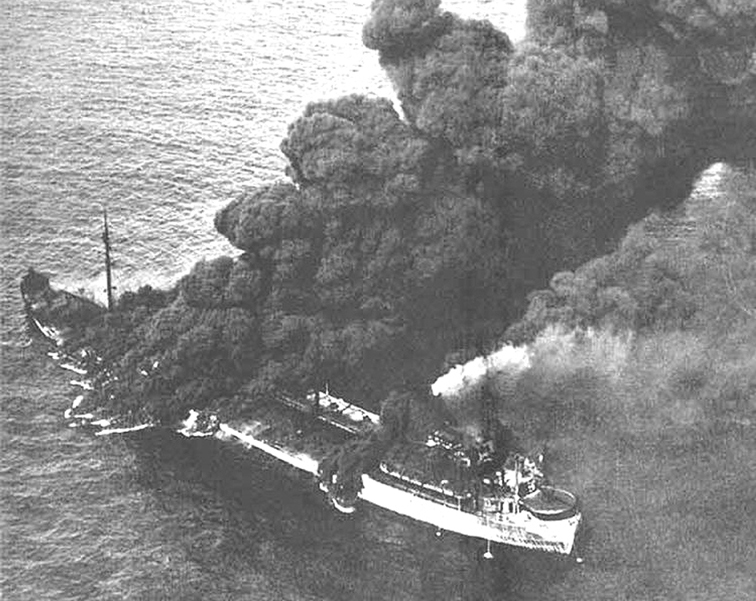
On May 7, USS Neosho was firebombed. She would drift burning for another four days in the Coral Sea. Source: Navsource
At 10:40 AM, the American fighters sighted the fleets of Abe and Goto and concentrated their attack on the small aircraft carrier Shoho since no other carriers were in sight. The Shoho was hit by no less than 13 1.000-lb (450-kg) bombs and at least seven torpedoes and it sank at 11.35. Of the 834 crewmembers only 203 were saved by the destroyer Sazanami. The Americans lost three dive bombers. Afraid of any more attacks, Goto withdrew his vessels to the north, but the American aircraft returned to the Yorktown and the Lexington. By command of Inoue, Abe was also ordered to withdraw his invasion force northwards until Takagi’s carriers had dealt with the American carriers.
That same afternoon, US and Australian warships from TF17.3 were attacked by land-based Japanese aircraft. The Japanese pilots claimed incorrectly to have sunk a battleship and severely damaged another battleship and a cruiser. In reality, Grace did not suffer any losses at all and succeeded in shooting down four attacking aircraft. Lacking air cover, the Australian commander withdrew his ships beyond the reach of Japanese air attacks, 220 nautical miles southeast of Port Moresby. From there, he was still able to intercept the Japanese invasion force.
After another incorrect reconnaissance message, which spoke of the movement of Fletcher’s carriers, Takagi sent 12 Vals and 15 Kates into the air at 4:15 PM. Knowing that the aircraft had to attack, and again land in the dark, he sent his most experienced pilots. At 5:47 PM, the American ships from TF17 sighted the Japanese aircraft and Fletcher sent 11 Wildcats to intercept the Japanese. The Wildcats shot down nine enemy aircraft after which the Japanese gave up any further attempts to attack.
Definitielijst
- aircraft carrier
- A warship of large dimensions with the facilities for starting, landing and maintenance of aircrafts.
- battleship
- Heavily armoured warship with very heavy artillery.
- destroyer
- Very light, fast and agile warship, intended to destroy large enemy ships by surprise attack and eliminating them by using torpedoes.
- Guadalcanal
- First island in the Pacific liberated by US forces from the Japanese during World War 2. Between August 1942 and February 1943 a number of confrontations on land, at sea and in the air took place on this island.
- invasion
- Armed incursion.
- lb
- Landing Barge (without engine or ramp).
- torpedo
- A weapon of war. A cigar shaped body fitted with explosives and a propulsion and control mechanism. Intended to target after launch a nearby enemy ship and disable it by underwater explosion.
Aircraft carrier battle in the Coral Sea
During the night of 7- 8 May 1942, TF17 sailed westward while the Japanese carrier fleet moved northwards. Early in the morning, both parties again launched reconnaissance planes. The Japanese also carried out reconnaissance flights from Tulagi and Rabaul. Anticipating the approaching carrier battle, Rear Admiral Fletcher handed over the tactical command of TF17 to Rear Admiral Fitch, the acknowledged specialist in the carrier-based attack. Under a clear blue sky, TF17 took up a position approximately 200 nautical miles southeast of New Guinea. At 08:20 one of the American reconnaissance planes sighted the Japanese carriers, situated 210 miles east of TF17. At about the same time, USS Yorktown (CV-5) and USS Lexington (CV-2) were spotted by a Japanese reconnaissance pilot.
From Shokaku and Zuikaku 18 Kates, 18 Zeros and 33 Vals were launched starting at 09:15. The Americans, in turn, sent 15 fighters, 39 dive bombers and 21 torpedo planes into the air. Both aircraft armadas passed each other unnoticed in the air. Just after 10:30 AM, the American fighter planes of the Yorktown reached the Japanese carriers which were on a parallel course, separated from each other by around 9.000 meters, protected by 16 Zero’s. The American dive bombers managed to hit Shokaku, which was hidden in a rain squall, with two 1.000 lb bombs on the bow, but the Devastator torpedo planes failed to place any hits. Two Dauntless dive bombers and two Zeros were shot down during the attack.
The strike group of USS Lexington (CV-2) appeared at the battle scene nearly an hour later than USS Yorktown’s (CV-5). Shokaku received another hit from a dive bomber from Lexington. Both Japanese aircraft carriers then disappeared under a low cloud cover that rendered the American aircraft unable to score any more hits. Additionally, three Wildcats from Lexington were shot down by the remaining fourteen Zeros. Shokaku’s flight deck was heavily damaged, and also damaged were hangars. Among the crew, there were 223 deaths and wounded. Since the ship was no longer able to execute her tasks as a carrier, Captain Takatsugu asked Jojima for permission to withdraw Shokaku from the battle. Takagi had no other choice than to agree.
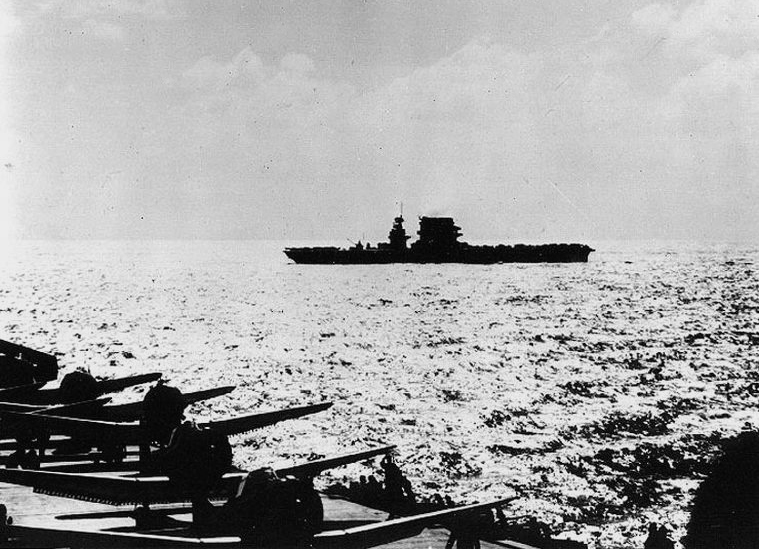
USS Lexington, seen from USS Yorktown in the early morning of May 8, 1942. Source: Naval History and Heritage Command
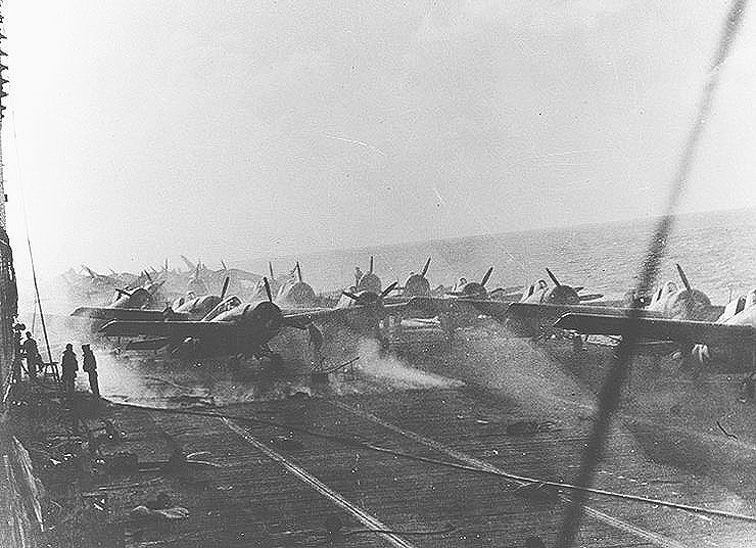
USS Lexington, hit by Japanese torpedoes and bombs, May 8, 1942. Source: Naval History and Heritage Command
At 11:13 AM, USS Yorktown (CV-5) and USS Lexington (CV-2) were attacked by Japanese aircraft. Four torpedo planes attacked Yorktown, but the American carrier managed to evade the torpedoes. The much larger and less agile aircraft carrier Lexington was attacked by 14 Kates, of which four were downed by American fighters. The remaining 10 Japanese torpedo bombers scored two hits. The first caused extensive damage to one of the storage tanks for aircraft fuel. The second 46 cm Type 91 aircraft torpedo also hit the American carrier on the port side, but this time near one of the boiler rooms, causing it to fail. However, USS Lexington (CV-2) was still able to reach a maximum speed of 24 knots, while fighting fires on board. The ship, however, listed seven degrees to port, which made manoeuvring considerably difficult.
The 33 Japanese dive bombers had awaited the attack of the torpedo planes and split into two assault groups. The formation that attacked Yorktown was scattered by two Wildcats. Nonetheless, USS Yorktown (CV-5) received a single direct hit by an armour-piercing bomb, that penetrated four decks and exploded in the ship. This caused significant damage to the construction and frame of the vessel and was aggravated by 12 near misses. Of the crew, 66 were killed or seriously injured. Two of the Aichi dive bombers were shot down by a Wildcat. Furthermore, the Lexington was hit by two bombs and an unknown number of near misses which caused fires that were quickly brought under control. The Japanese however, were convinced that they caused fatal damage to both American aircraft carriers and reported that to Takagi before retreating. In the ensuing air battles, an additional 5 Japanese and 6 American aircraft were shot down.
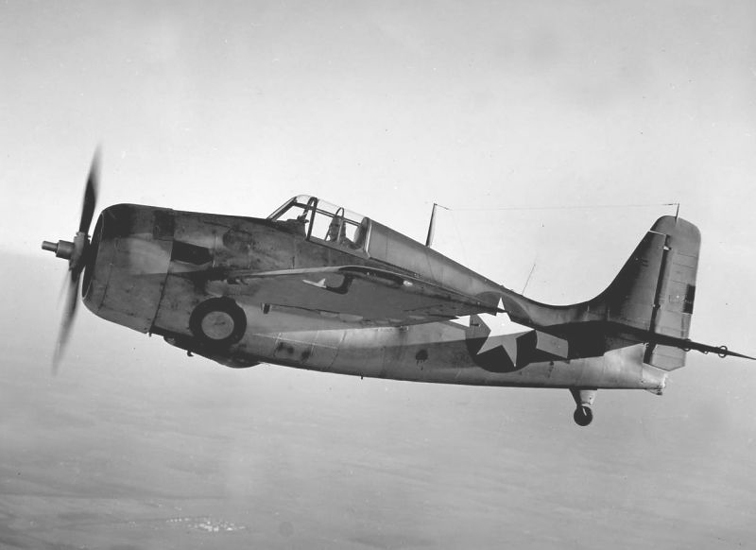
The F4F Wildcat was the fighter plane aboard American carriers until 1943. Source: Aircraft information
Definitielijst
- aircraft carrier
- A warship of large dimensions with the facilities for starting, landing and maintenance of aircrafts.
- lb
- Landing Barge (without engine or ramp).
- torpedo
- A weapon of war. A cigar shaped body fitted with explosives and a propulsion and control mechanism. Intended to target after launch a nearby enemy ship and disable it by underwater explosion.
After the battle
Of the 69 Japanese aircraft that were launched from Zuikaku and Shokaku, 46 returned to Zuikaku. Twelve of these aircraft were so badly damaged that they were jettisoned immediately. The remaining American aircraft were able to return to their flight decks, despite the damage to both US aircraft carriers. Owing to various circumstances, however, another eight aircraft were lost. Because of the loss of the Neosho, TF17 was confronted with a fuel shortage and with two damaged carriers Fletcher had no option but to withdraw.
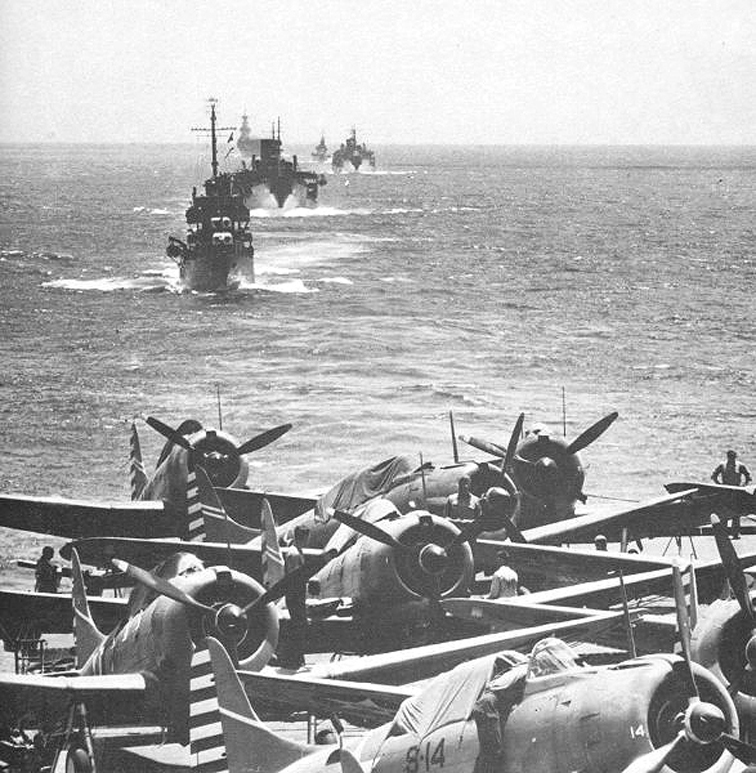
TF16, led by USS Enterprise appeared in the South Pacific on May 13, 1942, Source: P. Kimenai, Go2War2
At 2:30 PM, Takagi received a report that a mere 24 Zeros, eight Aichi dive bombers and four Nakajima torpedo bombers aboard the Zuikaku were still operational. His vessels too were hampered by fuel problems. He passed this on to Inoue together with the intelligence that USS Yorktown (CV-5) and a "Saratoga-class" carrier had been sunk. Since Takagi could no longer provide any air cover to the landings at Port Moresby and because that morning, Inoue learned that the cruisers and destroyers of Grace were sighted, the Japanese commander ordered the invasion force to withdraw. The invasion of Port Moresby was postponed until July 3, 1942, and Inoue prioritized Plan RY, the capture of Nauru and Ocean. The Zuikaku returned to Rabaul and the heavily damaged Shokaku went to Japan for repairs.
Meanwhile, the crew of USS Lexington (CV-2), assisted by fire control units of Yorktown, had brought under control the fires aboard. Moreover, the crew had succeeded in neutralizing the ship’s list by filling the starboard trim tanks with seawater. At 12:47 PM, however, a violent petrol vapour explosion occurred on board the carrier. That caused new fires, aggravated by a second explosion at 2:42 PM. After a third explosion, 45 minutes later, the fires were no longer manageable. At 5:07 PM, Captain Frederick C. Sherman gave the order to abandon the ship. Of the 2.951 crewmembers and 2.735 men, Rear Admiral Fitch included and Captain Sherman safely left the doomed vessel. This happened remarkably disciplined and all castaways were picked up by escorting cruisers and destroyers. At 7:15 PM the destroyer USS Phelps launched five torpedoes to the burning wreckage of the Lexington, all of them hitting the target. Half an hour later the aircraft carrier sank, with 36 aircraft still on board.
That same evening, due to fuel shortage, Rear Admiral Grace had to send back to Townsville in Queensland both the cruiser HMAS Hobart and USS Walke, the American destroyer that struggled with technical problems. He was not yet aware of the fact that TF17 had withdrawn and, with the remaining ships of TF17.3 he continued the patrol in the Coral Sea, south of New Guinea. On May 9, Fletcher was ordered to return to Pearl Harbour. On May 10, Grace had not yet received any communication from Fletcher and the Australian Rear Admiral, assuming that TF17 had left the Coral Sea, pulled his ships back to Australia. The next day, TF17.3 arrived in Cid Harbour, 240 kilometres north of Townsville. Around noon of that day, an American seaplane discovered the still floating and burning wreck of USS Neosho. The destroyer USS Henley was dispatched and rescued the 109 crewmembers and 14 survivors of USS Sims before the fleet tanker was sunk with torpedoes.
On May 10, 1942, Inoue sent an invasion force, commanded by Rear Admiral Shima to Naura to conduct Operation RY. Shima’s flagship, the minelayer Okinoshima however, was torpedoed and sunk on May 12 by the American submarine USS S-42. The attack on Nauru and Ocean was then postponed until May 17. On May 13, with the arrival of Rear Admiral Halsey’s TF16 in the South Pacific, Inoue cancelled Operation RY, and the Japanese vessels were immediately withdrawn to Rabaul. When Admiral Nimitz came to know this, he ordered Halsey back to Pearl Harbour. On May 26, TF16 arrived at the American base in Hawaii, while TF17, with the battered Yorktown, reached Pearl Harbour the next day.
Definitielijst
- destroyer
- Very light, fast and agile warship, intended to destroy large enemy ships by surprise attack and eliminating them by using torpedoes.
- invasion
- Armed incursion.
- torpedo
- A weapon of war. A cigar shaped body fitted with explosives and a propulsion and control mechanism. Intended to target after launch a nearby enemy ship and disable it by underwater explosion.
Aftermath
The Americans as well as the Japanese claimed victory in the battle of the Coral Sea. The Japanese spoke of an American defeat because they lost two large aircraft carriers, a fleet tanker and a destroyer. The Japanese fleet lost only a small aircraft carrier, a destroyer and three minesweepers. Although the Japanese had sunk only one enemy aircraft carrier, they did secure a tactical victory by disabling more important warships of much greater tonnage. The Americans however, rightly claimed a strategic victory, as the Japanese were forced to postpone the invasions of Port Moresby, Nauru, and Ocean. Since the outbreak of the war in the Pacific, the Americans, assisted by the Australians, had been able to stop the Japanese invasions. Due to that fact, the isolation of Australia had also been postponed. After the Doolittle Raid, this was the second most important morale boost for the Allies.
However, both parties had made serious mistakes and missed opportunities during the battle of the Coral Sea, mainly due to inexperience with carrier-to-aircraft combat. Nevertheless, the Americans learned important lessons from these mistakes, which they also acknowledged. After the battle of the Coral Sea, they improved their attack tactics, their coordination and their lines of communication between aircraft carriers and groups of combat aircraft. Additionally, important improvements were made to the anti-aircraft defences on board aircraft carriers and were made in the protection of aircraft fuel tanks aboard carriers, in particular by fitting the tanks and supply and discharge pipes with CO2 extinguishing installations. The Americans also knew that the construction of their aircraft carriers was sound. The Yorktown still proved to be seaworthy after the rafter damage and the torpedo-bomb hits aboard the Lexington had failed to sink the carrier. (That would require another five torpedo hits.) This gave the US Navy enough confidence in their carriers to face future battles.
The Japanese Imperial Navy did not learn much from the battle of the Coral Sea. In particular, supreme commander Admiral Yamamoto was obviously in such a hurry to carry out the plan MI, the invasion of Midway, that he became careless. He failed to make sure that Lexington and Yorktown were definitely put out of action. That failure made him assume that the Americans could deploy no more than two aircraft carriers against his invasion force for Midway. That was the reason that he sent Zuikaku to Japan and did not consider of utmost urgency the replacement of the lost aircraft and crews of the carrier. As a result, the Zuikaku was not deployed at Midway. Yamamoto however was convinced that with the aircraft carriers Kaga, Akagi, Soryu and Hiryu, he had sufficient superiority for the attack on Midway. He failed, however, to take into account that the Yorktown which, by incredible effort of the shipyard personnel at Pearl Harbor, could be repaired in time for the battle of Midway. Since the Americans had broken the Japanese navy code, they knew of the pending Japanese attack on Midway, and were able to extend considerably the number of aircraft on the atol. With this, Midway itself became an unsinkable flight deck and Yamamoto’s ascendancy was nullified.
Definitielijst
- destroyer
- Very light, fast and agile warship, intended to destroy large enemy ships by surprise attack and eliminating them by using torpedoes.
- invasion
- Armed incursion.
- Midway
- Island in the Pacific where from 4 to 6 June 1942 a battle was fought between Japan and the United States. The battle of Midway was a turning point in the war in the Pacific resulting in a heavy defeat for the Japanese.
- Raid
- Fast military raid in enemy territory
- torpedo
- A weapon of war. A cigar shaped body fitted with explosives and a propulsion and control mechanism. Intended to target after launch a nearby enemy ship and disable it by underwater explosion.
Information
- Article by:
- Peter Kimenai
- Translated by:
- Cor Korpel
- Published on:
- 22-10-2023
- Feedback?
- Send it!
Related sights
Related books
Sources
- FUCHIDA, M. & OKUMIYA, M., De slag bij Midway, Prisma, Utrecht, 1965.
- IRELAND, B., Vliegdekschepen, Veltman Uitgevers, Utrecht, 2007.
- MACINTYRE, D., Vliegkampschepen, Standaard Uitgeverij Antwerpen, Antwerpen, 1989.
- MCCURTIE, F.E., Jane's fighting ships of world war II, Studio, Londen, 2001.
- ZICH A., De rijzende zon, Time-Life International, 1979.
